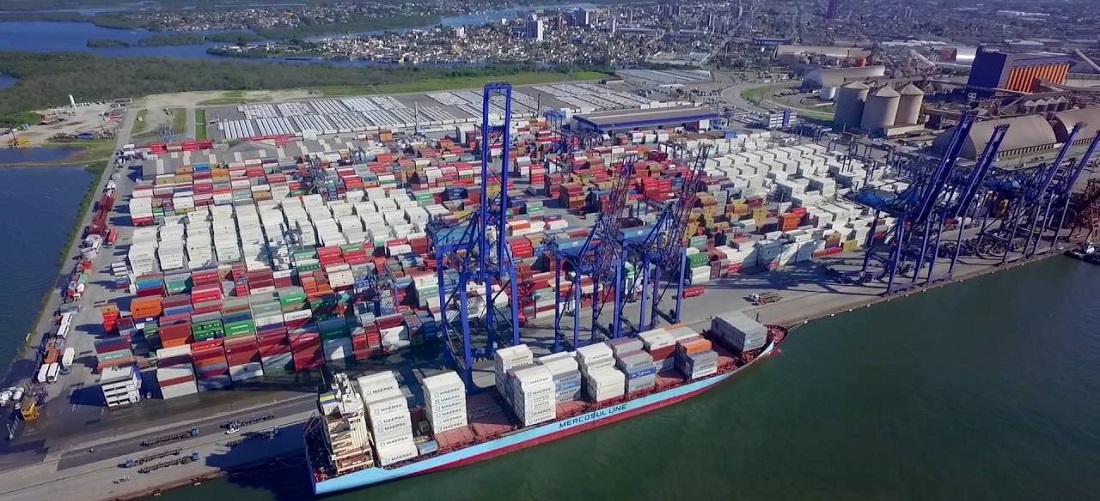
Draft changes lead to cost reduction in Paranaguá
Dec, 18, 2019 Posted by Sylvia SchandertWeek 201952
TCP (the company that manages the Paranaguá Container Terminal) has received a new service order from APPA (Paranaguá and Antonina Ports Administration) that updates the operating conditions, applying the Tide Variable Draft. In addition, daytime shipping conditions have been equalized, which makes the Terminal’s operating windows more flexible and results in cost savings for the entire logistics and production chain.
The Service Order revised Chapter 8 of the norm, which establishes the parameters of ships for traffic and permanence in the Ports of Paranaguá and updated the conditions for access to the Galheta channel and the mooring of ships. In practice, the new standard establishes zero-tide draft (measurement of water line or surface to keel) of 11.30 meters, representing a minimum increase of 40 cm per operation.
“The equalization of the day and night draft in the Port of Paraná’s channel, basin, and berths was an old and very relevant claim for the supply chain that demands the second Port System in Latin America. Its realization has a very positive impact on our business, making us one of the first Brazilian ports able to receive the largest foreign trade vessels in Latin America,” explains Juarez Moraes e Silva, Institutional Director of TCP.
According to the Executive, this will increase the handling capacity, reducing operating costs and giving greater competitiveness to the foreign trade that has Ports of Paraná in its global connection channel. “It is the result of work supported by technical studies with a lot of foundation and alignment among all the actors involved: Port Authority, Brazilian Navy, through its Paraná Port Authority, and Practicing and Port Terminals. As a result, the Port of Paranaguá and Antonina delivers even more productivity and competitiveness with operational safety for both the client and the shipowner,” he says.
History
The TCP executive explains that Paranaguá has always had navigation restrictions due to physical and environmental conditions. However, the joining of efforts between the actors involved reduced operational constraints, from the maintenance dredging performed in 2016 and the deepening dredging carried out between 2017 and 2018, ensuring better operating conditions for ships and increasing safety during night navigation.
In 2017, the operating draft for ships in the evening was 10.6, scenario in which ships waited up to 24 hours to leave Paranaguá with maximum draft. Today, with the new operating parameters, wait time is expected to decrease to numbers around one to four hours. “Now, the loaded ship does not have to wait so long for the ideal conditions to leave or enter in Paranaguá,” emphasizes Moraes e Silva.
Details
The upgrade of Ship-specific Channel and Mooring Channel Conditions provides that the maximum allowable draft is 12.5 meters, subject to some premises. According to the document issued by the APPA, for zero tide height, the reference draft is 11.3 meters.
With this limit, ships up to 245 meters long and 36 meters wide can carry up to a draft of 12.5 meters. Ships up to 298 meters long and 45.2 meters wide can carry up to 12.3 meters in draft.
For vessels between 299 and 368 meters in length and up to 51 meters in length, the maximum draft reached shall be 11,8 meters. TCP expects that container ships will leave Paranaguá loaded with at least 160 more containers per operation. For the year 2020, this is estimated to represent a 10% increase in TCP’s total turnover.
-
Economy
May, 31, 2020
0
IBGE data shows agribusiness is only sector to show growth in first quarter
-
Ores
Jul, 24, 2019
0
Vale partially resumes dry processing at Vargem Grande Complex
-
Ports and Terminals
Dec, 15, 2022
0
Portocem signs pre-contract to build natural gas-powered thermoelectric in Pecém
-
Other Cargo
Feb, 05, 2019
0
Argentina records a significant increase in garlic exports



